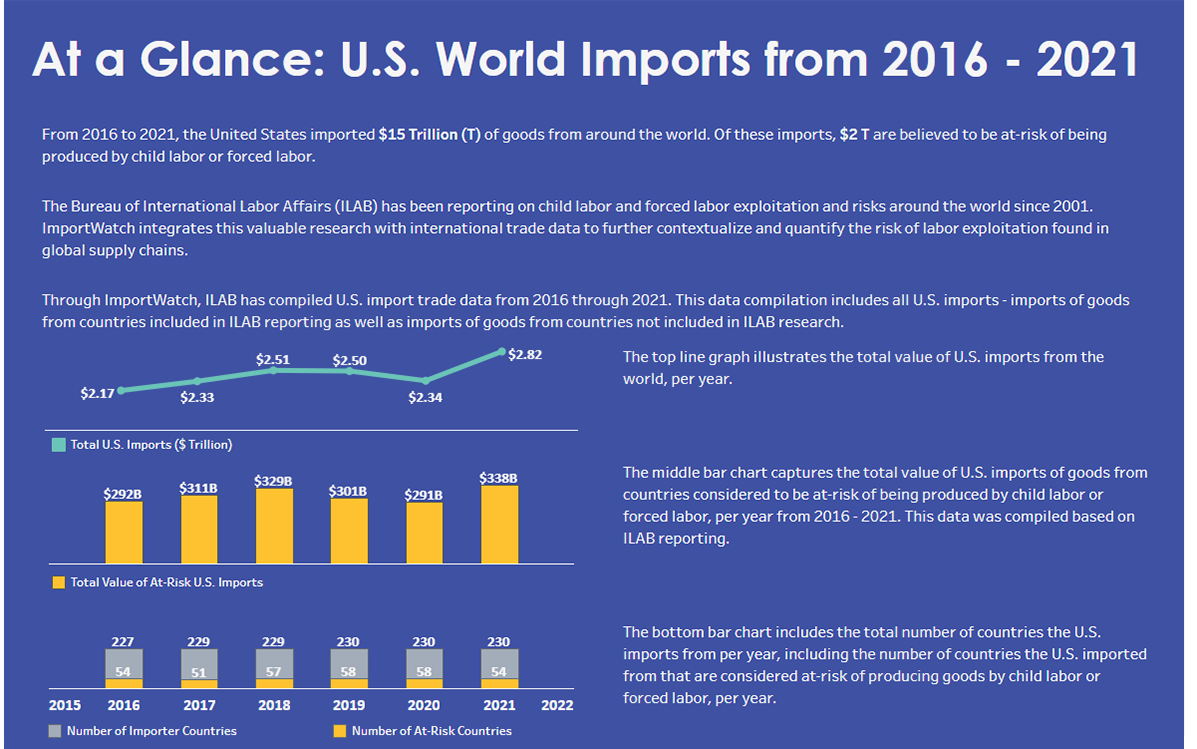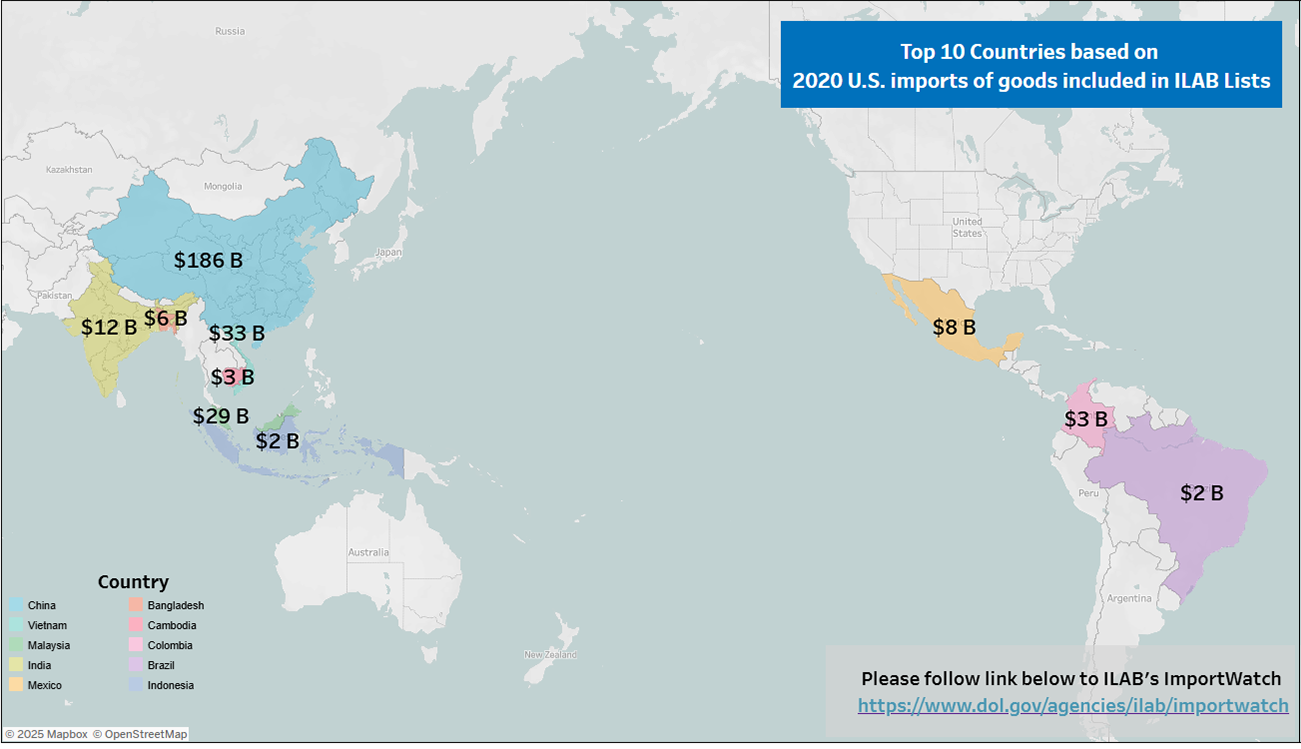Welcome to ILAB's Compliance and Accountability Resource
ImportWatch empowers users to advance efforts in supply chain transparency as well as strategic sourcing priorities. This innovative tool integrates existing reporting developed by the Bureau of International Labor Affairs (ILAB) with U.S. import trade data, including Harmonized Tariff Schedule codes.
ImportWatch is intended to serve as a resource for users interested in learning about labor exploitation risks in global supply chains. Consider adding the ImportWatch to your compliance, sourcing, trade, and supply chain toolbox.
The ImportWatch search feature enables users to select a specific country, good, type of labor exploitation, and year from the respective dropdown lists. The default view presents data for all countries, goods, and labor exploitations. Results under both tables will vary based on each selection made.
For additional guidance on each dropdown option, read more.
Year: U.S. import trade data is represented for 2016 through 2022. This data is collected via the U.S. Census Bureau. Users may select one or more Year(s) from the dropdown options to view data specific to the Year(s) selected.
Country: Countries listed in ILAB’s List of Goods Produced by Child Labor or Forced Labor and List of Products Produced by Forced or Indentured Child Labor are included. Currently, ILAB reporting identifies over 70 countries.
Good: ImportWatch covers over 150 goods, ranging from Açaí Berries to Zinc. The Goods include all those listed in ILAB reports, having been identified as higher risk in their production in specific countries.
Labor Risk: Represents the type of Labor Risk included in ILAB reports associated with each good and country pairing and reflects when a good has been added to or removed from the list. Types of Labor Risk include child labor, forced labor, and forced or indentured child labor. The Trade Details View includes additional details related to the year that each type of labor exploitation was added (and removed, where applicable) to the good and country pairing.
U.S. Import: Represents the aggregated value of the Good(s) imported into the U.S. from the selected Country or Good for the Year selected. The Trade Details View reflects the value and volume of goods imported into the U.S. for each 10-digit tariff code. The default Year for this view is set to 2022. Full year 2023 data is expected to be available in the first quarter of 2024. The color indicates whether the labor exploitation is reported for that particular country and good pairing. If red, the labor exploitation continues to be reported for the selected year(s). If black, the reported labor exploitation is no longer listed in ILAB reports.
Access additional data analysis functionalities on our Tableau Public site here. Follow the At-a-Glance dashboard for more information on U.S. Imports at-risk. Follow the Top 10 Countries dashboard to view more.
About ImportWatch
ImportWatch was developed through the integration of four publicly available sources from the U.S. Government. These include, U.S. Department of Labor's List of Goods Produced by Child Labor and Forced Labor and List of Product Produced by Forced or Indentured Child Labor; U.S. import trade data via the U.S. Census Bureau; and the U.S. International Trade Commission Harmonized Tariff Schedule classification of the goods and products included in the List of Goods Produced by Child Labor and Forced Labor and List of Product Produced by Forced or Indentured Child Labor. All sources are publicly available for review.
For additional details related to the Harmonized Tariff Schedule and Classification Methodology, please read more.
Comments or Questions
To submit comments or questions regarding ImportWatch, please email GlobalKids@dol.gov.
ImportWatch Disclaimer
ImportWatch aims to provide users an increased level of visibility into the goods imported into the U.S. from the countries included in ILAB reporting. The fact that goods are identified as being produced by forced or child labor in a particular country does not indicate that the specific goods imported into the U.S. were produced by child labor, forced labor, or forced or indentured child labor. Rather, it indicates that the goods may have been produced under higher risk conditions for these violations, based on ILAB's research pertaining to the findings of forced and child labor in goods and countries around the world. The information in this tool does not constitute legal advice. We encourage users to utilize the findings gathered from this tool to inform their social compliance and supply chain transparency efforts.


